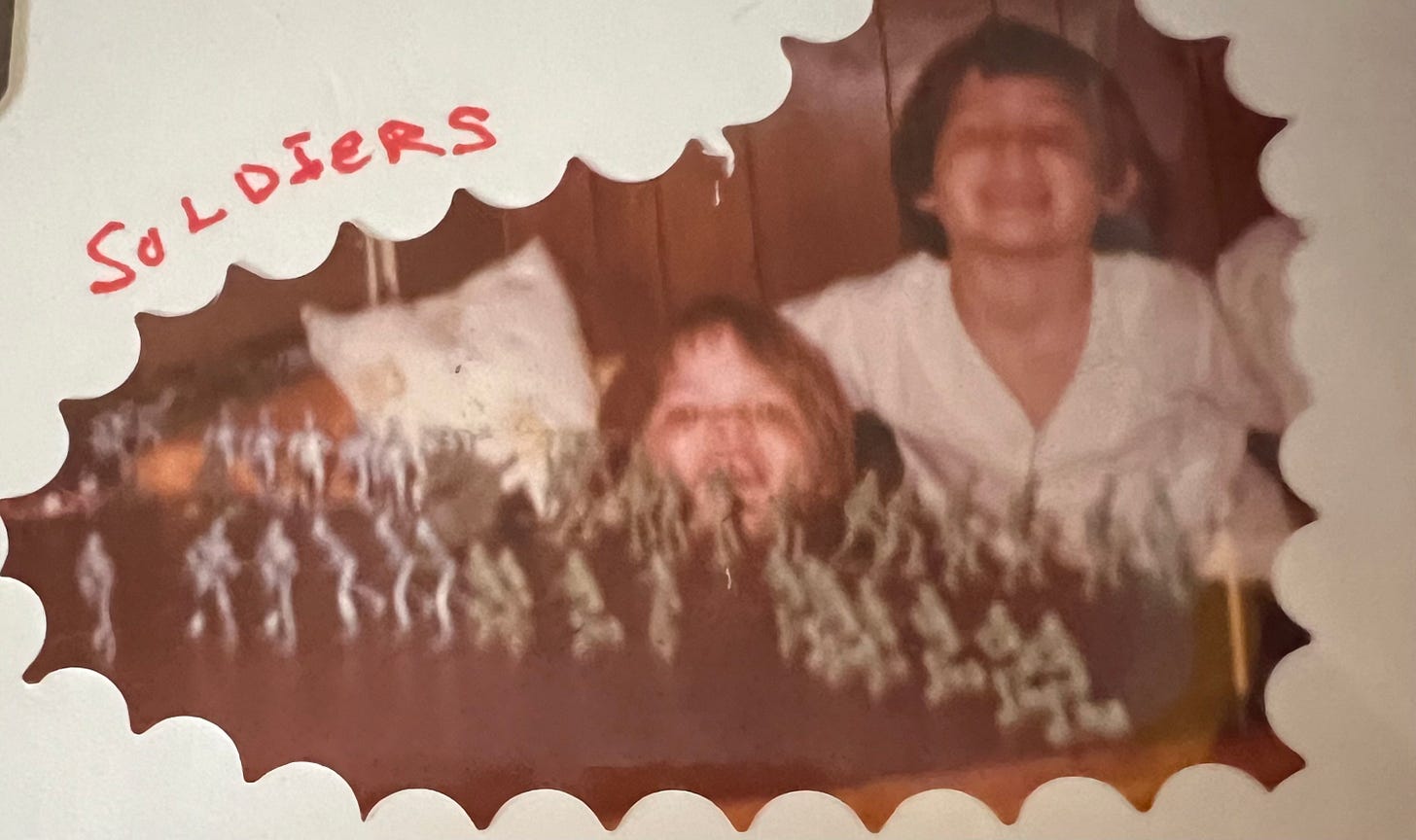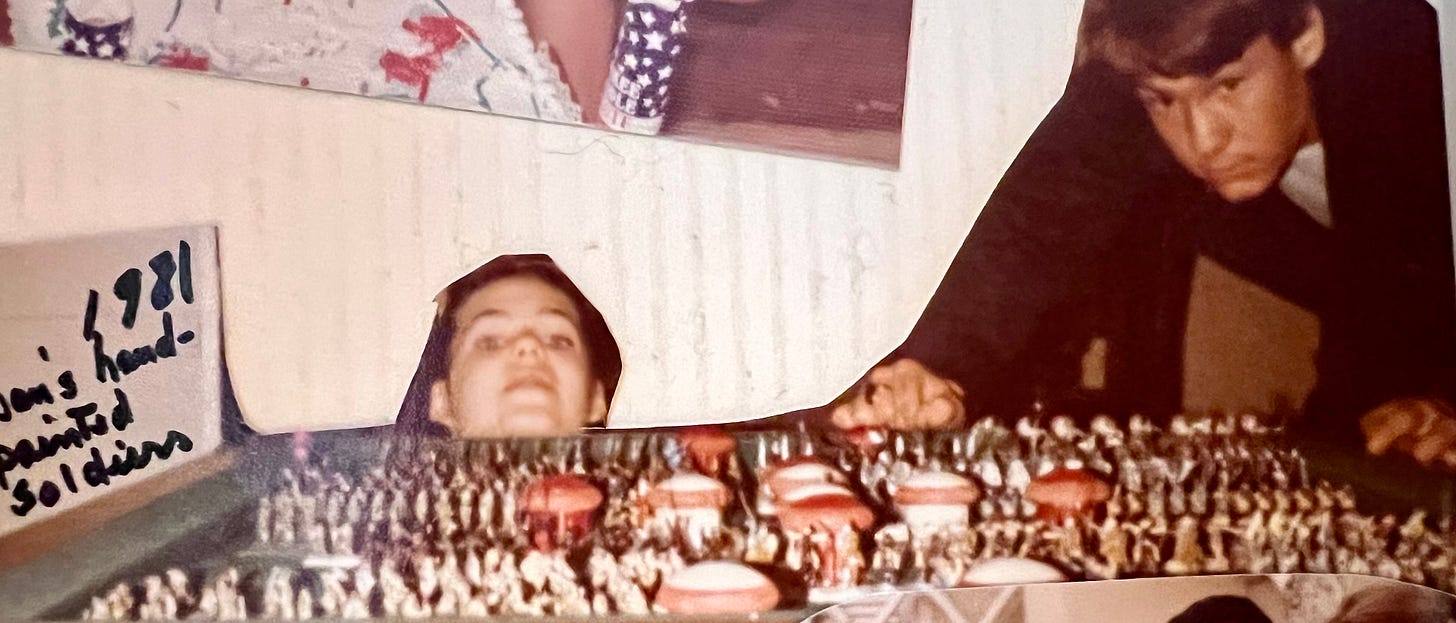As any parent knows, when your children enter your life many less important things go by the wayside. That's not only as it should be, but I wouldn't have it any other way. Kids take a lot of time and the focus should be on them and their needs.
Of course, eventually they leave home to pursue their own dreams and push their own lives forward in whatever circumstances call to them. This is where my life is right now. So all of a sudden those things that I put aside 21 years ago due to time constraints are no longer impossible for me to contemplate picking up anew.
Now, I don't plan on diving into NFL football again (or my old fantasy football leagues for that matter). My softball playing days have passed me by as well. I don't need the injuries that would accompany my taking to the diamond again. But one of my favorite and longest-lasting pastimes is now something I can once again entertain doing. And I find that I am so enthralled by the idea that I am even having dreams while sleeping about picking up where I left off. The wargaming bug is calling to me.
I started wargaming when I was twelve years old. For those counting that was in 1977. Now, I cannot remember a time when I did not own toy soldiers. From the plastic Second World War-style ones they sold in the “five and dime” stores when I was a child to the (then and still now) fabulously pricy 54mm beautifully painted Britons line only available in the very high-end toy stores. I had whatever I could get my hands on as early as 1970. But playing with toy soldiers and wargaming is not the same thing.
My first exposure to wargaming based on actual rules was in 1971. My mom was working in London and so we were living there temporarily. The early 20-something son of one of her co-workers was a wargamer and so she set up a playdate between the two of us figuring that since we both liked “toy soldiers” we would hit it off. But we didn't. I wanted to do whatever I wanted with my soldiers and he used real rules. It was around this time that my mom bought me one of the more little known and yet also pretty classic books called How to Play Wargames in Miniature by Joseph Morschauser III.1 This is a very simple set of wargames rules and information, but it was still too much for me at the time. I wasn't interested in constraining my imagination or range of action with such things (and had no one I could have wargamed with among my peers at that age anyway).
Fast forward to 1977. I was playing a still relatively new game called Dungeons & Dragons at the time. You may have heard of it. The very early versions of that game had another rule book that was often used with it called Chainmail (written by the D&D guru Gary Gygax and Jeff Perrin). Chainmail was a set of wargames rules. Being older by this time and having others who might have consented to being opponents and with D&D paving the way for me to better understand rules sets and systems I ventured forth to one of the local wargaming shops in Southern California near my home. It's name was Le Maison du Guerre (“The House of War”). I still remember the owner's name (Ed) because it was the same as my dad's.
From the moment I walked in I was enthralled by the hand-painted miniature figures on display. I knew this was the hobby for me and Ed sold me on the oh-so-colorful Napoleonic age (this was his and the store's most popular era). To a kid with no real income the 25mm metal figurines were unbelievably expensive. But as a birthday gift my parents purchased some of them and I went home and eagerly slapped paint on them (a horrible paint job to be sure). I brought them back to the store only to be berated by the owner for not knowing that there were very specific elements to Napoleonic uniforms and that to simply paint the French in blue was unacceptable. The cuffs and collars and trim all needed to match the colors on the historical uniforms of the units they represented. It all seemed too much for me yet again. Angry and disheartened I went home and threw the figures into the trash.
This is where one of the really special elements of the hobby as it existed back then comes into play. The store with which you associated yourself. Shortly after my negative experience at “The House of War” I went to another store that had a wargaming focus. I went there to get a D&D supplement to the original three-book set (It was called “Greyhawk” for you aficionados). The store was called “Competitor's Castle”2 and the owner was Skip Gardella. Skip was the total opposite of the previous store owner I had dealt with and was a natural wargaming evangelist. He also had kids himself and understood our limitations and our need to be introduced slowly to things. To make a long story short, that store became my version of a wargaming brotherhood and I went back regularly for many years.
That's one of the interesting aspects of wargaming during that era. Very much like a college fraternity wargamers tended to have “their store”, populated by other players they knew and wargaming eras and using rules that store tended to favor. Some people were Le Maison du Guerre people. Others were denizens of The Last Grenadier and others were Competitor's Castle folk. We might meet up at wargaming conventions from time to time, or brave another store if they had a product we needed that we couldn't get anywhere else, but one's store was like the various houses in Harry Potter. One stayed in their own “house”. I made great friends there and at one point it became my first real paying job, when I was still too young to legally be employed anywhere else. Instead of being paid in cash I was paid in soldiers. How else was I going to afford the miniatures I used in gaming?
While Le Maison du Guerre was a shop where the Napoleonic era dominated the games, I can't remember ever seeing people gaming that period in Competitor's Castle. The eras popular in that “fraternity” were “ancients” and the Second World War. Ancients was a catch-all term that covered armies from the beginning of recorded history to the Renaissance. And the WW2 era included not just land warfare, but naval and air combat as well. To this day those are my eras. I have remained true to my House even after all these years.
As I look at the armies I have built over the years I am transported back in time to when the lead figures I purchased were initially bought, painted and used on the wargaming table. They are like little time capsules for me and I can recall when I bought them and the comments I received after painting them and even how some of the units fared when they were used in the games. The personality of these inanimate lead objects is a weird aspect of the game that is completely lost when I play modern computer games designed to recreate the wargames I played back at “The Castle”. The units one painted had their own sort of spirit and karma (if you will). Some would regularly exceed expectations in battle, while others seemed always cursed for some reason. The units you painted and fought with had somehow acquired personalities. And as weird as that sounds, that is a somewhat historically accurate element to the whole thing. They are not the soulless digital units in my computer wargame. They each have histories, and I can remember even today how they fared in battles that were fought by me forty years ago.
The side benefit of historical wargaming is the incredible amount of historical information one absorbs. Research is integral to the hobby. The fact that I can recall the main armament of nearly every tank or battleship from the Second World War war is a direct byproduct of wargaming that era so often. And the actual histories of every “ancients” army I own is also well known to me. It would have been nearly impossible to build those lead armies without doing the research that led to that information being forever lodged in my cerebral memory banks. The way I make my living today is directly connected to that hobby. In fact, had I never met Skip Gardella would I even be writing this? Would you be reading it?
I no longer live in a big city and don't have access to potential opponents these days so am currently researching solo wargaming quite a bit. In addition, as I have grown older I have become more persnickety about everything from rules sets to the historical accuracy of every element of my wargaming. I have become more like Ed at Le Maison and less like Skip. I doubt I would mesh well with other wargamers at this point. But I remember so well those Competitor's Castle fraternity brothers and the many days and nights of fun we had eating meatball sandwiches and drinking Pepsis from the sub shop next door while we gamed until the wee hours. I even run across the occasional marinara thumbprint on my old rules sets that is as effective at taking me back to those days as the miniature figures I still own that were purchased, painted and used in games on the tables in that wonderful store.
I have lost touch with Skip over the years. The last I heard he was in a veteran's hospital and wasn't doing too well. But I miss him and feel the debt of gratitude for all he infused into me. He was the equivalent of the head of our House or President of our fraternity. Wherever you are old friend, I salute you.
One of the earlier modern wargaming rules sets was written by wargamer and famed Science Fiction author H.G Wells. It was called Little Wars.
Back in the day it was located in the Reseda neighborhood at the corner of Reseda Blvd and Sherman Way.









